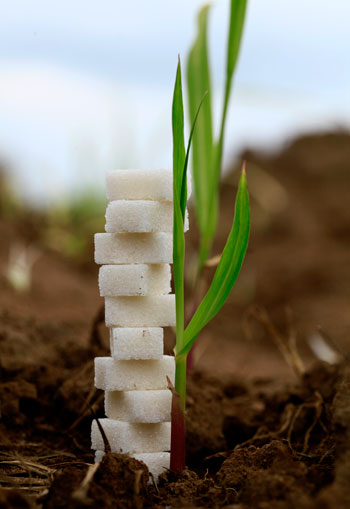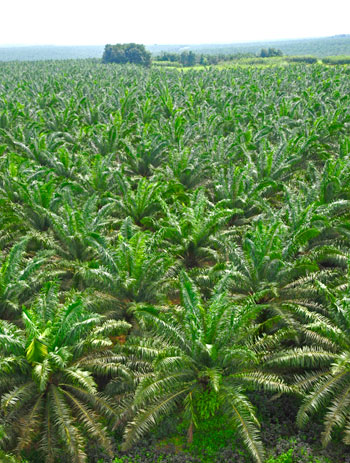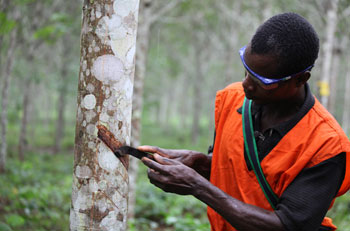Agriculture in Côte d’Ivoire
H.E. Mamadou Sangafowa Coulibaly, Minister of Agriculture of Côte d’Ivoire
Agriculture in Côte d’Ivoire went through three major phases; the one of growth after the independence was followed by the phase of crisis which lasted till 1990s. Since then, the agriculture in Côte d’Ivoire has not been able to resume the sustainable growth.
Interview with H.E. Mamadou Sangafowa Coulibaly, Minister of Agriculture of Côte d’Ivoire

You said that the national agriculture investment program aims to allocate 10% of the national budget to the agriculture sector to ensure food security and increase the agriculture’s growth to 8.9%. Can you describe the action plan, its specificities and its expected effects? What does it represent for Côte d’Ivoire? How do you envisage it in practice?
The national agriculture investment program is a very important program for the industry. Recall the context in which this program has been adopted. Ivorian agriculture went through three major phases.
After independence, there was a phase of growth due to a political decision that based economic development on the agriculture. This phase lasted until the 1980s. The boom in agriculture that followed independence helped develop infrastructures and the economy in general.
Every period of exponential growth is followed by a period of depression. Côte d’Ivoire is not an exception. The second period from the 1980s to the 1990s is known as the period of crisis. After the crisis, the country had to restructure the agriculture sector with its partners in development and through a withdrawal of the state. Since then, the agro industry has not yet found the resources to resume and pursue sustainable growth. The national agriculture investment program emanates from this inability and lack of resources. The goal is simple: to revive the agriculture in a sustainable manner.

The purpose of the national agriculture investment program is to bring growth to the sector. The growth of the agriculture has a positive effect on the economy’s growth in general. This is a sector that provides two-thirds of the country’s jobs and is a tool to fight poverty. The investment program is as essential as the agriculture itself and thus requires substantial financing – at least 10% of public resources and additional external resources. The national investment program itself will amount to about a billion dollars over the next five years. The investment program will stimulate the growth of nearly 9% and will effectively fight poverty. It is important to mention that three out of four people who escape poverty in Côte d’Ivoire do so thanks to the agriculture.
Furthermore, the national investment program is complimentary to the common agriculture policy of the sub-region, the Comprehensive Africa Agriculture Development Programme (CAADP), receiving the benefits of the synergies induced from the coherence between the two.
Do you think that international companies have a role to play in the plan?
International companies have a role in the plan because the national investment program has a number of principles. The first principle of the plan corresponds with national priorities. The national priority is food self-sufficiency. Studies have shown that the agricultural sector must focus on food security and high growth areas.
The second principle is a participatory approach. It is not for the public to say, this is what is good for the private sector or for the producers. Instead, it will be a participative approach where all the stakeholders have a say.
We cannot compare a chocolate that is made in Switzerland and made in Côte d’Ivoire but these things will evolve over time and maybe Côte d’Ivoire become a quality brand.
The principle of the national investment program is to involve all concerned parties. There is a signed pact between the state, the sub-regional institutions such as ECOWAS, the African Union, the development partners (including the private sector technical and financial partners), whether national or international, and NGOs. This is a program that has many participative steps and whose implementation was subject to the pact.
The third principle is to monitor the program’s implementation. In general, the problem at hand is not formulating policies, rather, the problem is having the means to implement them. Even when the means are plausible, there must be an efficient allocation of resources. Research shows that the quality of agriculture expenditure is low in Côte d’Ivoire compared to the African average. By low, it means that spending 1% generates a growth in the agriculture sector of only 0.245, while the African average is 0.356, which is already well below the international level. That is why the plan is focused on effective allocation of resources.
We talked about how resources are a major challenge. Agriculture has not had a significant number of investment in decades. How do you approach the issue of resources in the ministry?
The agro industry has experienced three phases of development. There was the phase after independence in which there was a massive development and growth of the sector. After this phase, the agriculture entered a crisis where the state was asked to withdraw. By withdrawing, the state cut off funding. The state’s contribution to the industry in 1981, when the state’s share had started to decline, was 25% of the national budget. But in 2007, it was only 1.7%.
Therefore, the ambition of this government and the public institutions is to put agriculture at the center of economic development. How does it translate into reality? The budget dedicated to agro industry will grow from 1.7% to 10% and later to 15%. Also, Côte d’Ivoire made a commitment in Maputo in 2003 to develop agriculture and to commit at least 10% of the national budget as a part of a larger initiative to reduce poverty. This commitment was also signed by other African countries to attain the Millennium Development Goals in order to create jobs and to spur economic growth.
What are the most promising markets in terms of Côte d’Ivoire’s agricultural exports? In fact it is a major challenge, because while it is true that Côte d’Ivoire produces the unprocessed commodities, they are transformed elsewhere and re-exported to Côte d’Ivoire.
Consider the processing of commodities. In the coffee/cocoa sector, Côte d’Ivoire is now at 35% of the first-stage processing of local products. Nonetheless, the target is to achieve at least 50% of the processing by 2015. This will not only create jobs but also add value.
While the cashew nut sector has seen rapid development over the past twenty years, it has a very low processing rate. Less than 2% of raw cashew nuts are processed locally. Côte d’Ivoire is the largest African producer of raw nuts today; the country is the top worldwide exporter of raw nuts. And there are others. The country still has room for local processing of its own products.
Côte d’Ivoire has a strategic position from two points of view: infrastructure and cost of energy (electricity). Côte d’Ivoire is an ideal gateway for nearly 200 million consumers in the sub-region. The strategy is to develop processing industries that can export in the sub-region. Côte d’Ivoire has already started this trend. The country is processing sugar and palm oil, which they export to Nigeria and the sub-region. Côte d’Ivoire can meet the needs of the sub-region in terms of palm oil.
Products such as coffee and cocoa are semi-finished products. The strategy is to not produce the chocolate or finished products simply because the requirements of the countries that consume these products are very stringent and there is also a psychological barrier. One cannot compare a chocolate that is made in Switzerland to a chocolate that is made in Côte d’Ivoire, but these things will evolve over time and maybe Côte d’Ivoire will be considered a quality brand one day.
The strategy is to promote small processing plants that will export in the sub-region, capitalizing on free access to more than 200 million consumers. It could help develop the local industry.

Can you give us a strategic vision for the future, such as sustainable development?
Sustainable development is a very important subject that needs to be integrated into the strategy. The effects of economic growth and agricultural development left Côte d’Ivoire with less than 2.5 million hectares of primary forest out of the original 16 million hectares in less than a century. The forest heritage was practically decimated. The priority is to preserve natural resources and to rehabilitate them. Preservation will contribute to sustainability. Our ministry would also like to introduce a stimulus package in the agriculture sector.
Another priority is the working conditions and quality of life of farmers. They must have basic infrastructures. They must have drinking water. They must have access to electricity and education and they must have good working conditions. Today’s markets are increasingly demanding better standards.
What is your vision for the industry?
In five years, all that our country wants is to have is an efficient agriculture with limited government involvement. Having an effective and efficient private sector means that professional producers must be available – people who have mastered production throughout the value added chain and who can derive substantial income from their work. The producers must also find themselves within a professional organization in which they clearly defend their interests.
It would be ideal to develop 2 strategic axes. One agricultural axis is focused on internal needs and making the country self-sufficient. Along with this strategy, the agriculture also aims to stay on the international market and compete in relation to the cash crops that allow the agriculture to invest and develop Côte d’Ivoire.